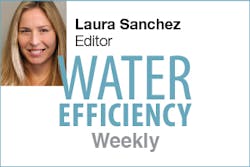We have a water problem. Globally, 28% of water delivered by utilities is lost due to leaks, inaccurate usage measurement, and theft. In some countries, non-revenue water rates exceed 50%. In America, water infrastructure needs to increase its efficiency—and much of that improvement begins with accurate measurements.
“We are operating blind,” writes Michael E. Webber in a March New York Times Op-Ed article about America’s water infrastructure. “Compared to sectors like energy, where robust statistics on prices, production, and consumption are generated weekly, key information on water use and supply is missing or published only every few years.”
In a separate New York Times article, Charles Fishman explains that the official analysis of water use in the US takes place every five years. “It takes a tiny team of people four years to collect, tabulate, and release the data,” he says. “In November 2014, the United States Geological Survey issued its most current comprehensive analysis of United States water use—for the year 2010.”
Both authors make valid points. There is a startling absence of water data. And the data that we actually receive is often antiquated by the time it reaches us. How can we possibly manage our resources if we don’t have accurate insight as to how much water we use, or how much we need to conserve? Water scarcity makes this data deficiency increasingly distressing.
Updating water infrastructure with advanced metering technology and communications software seems like a logical step toward accounting for, and ultimately reducing the amount of water lost. Webber would agree. And so would many utilities.
“Smart water metering is a few years behind smart electricity metering, but is now catching up across the world,” according to Ben Gardner, President of Northeast Group, a Washington-based smart infrastructure intelligence firm.
According to the Northeast Group’s recent study, Global Water Metering Market Dataset (2016–2026), investment in water metering is projected to grow from $3.7 billion per year in 2016 to $7.5 billion per year in 2026. Worldwide, it seems that investment in water data is perceived as increasingly valuable.
In his article, Webber advocates for increased funding for water data collection and research. “We should increase the federal budgets for water monitoring,” he writes. “Establishing a Water Information Administration, just as the Department of Energy has an Energy Information Administration to collect, curate and maintain up-to-date, publicly available water data would inform policy makers and the markets.” He supports funding allocations for the development of new technologies to increase efficiency and reuse, the premise being that data supports both conservation and innovation.
What are your thoughts? Will increased metering provide answers? What steps beyond metering do you think the industry should take to address the data deficiency? And would you support the formation of a Water Information Administration?
